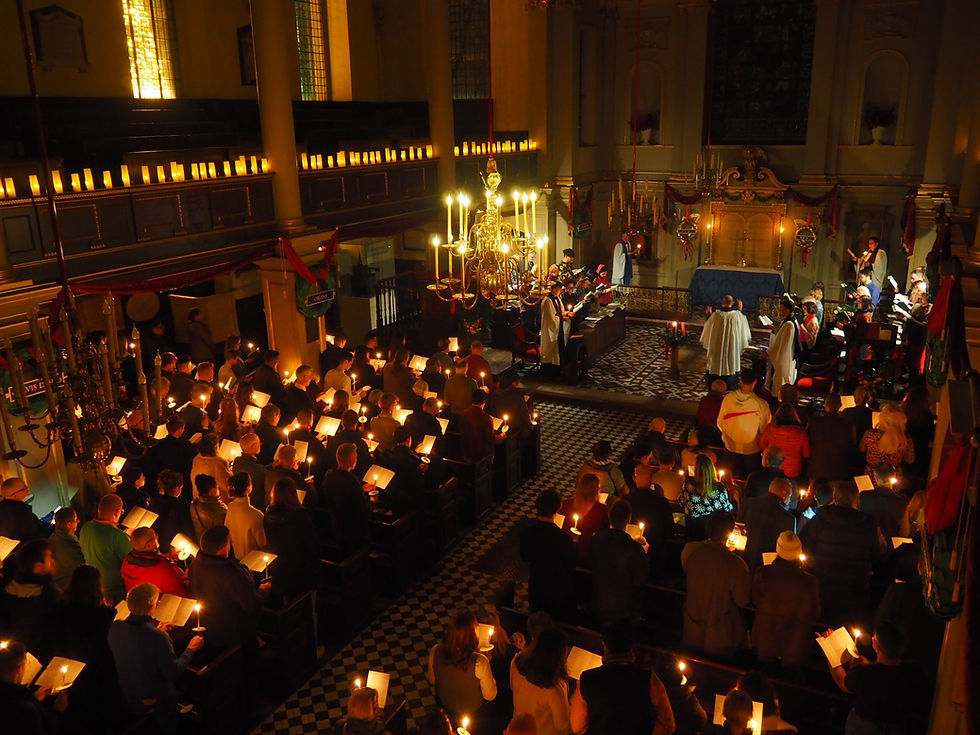In the midst of death we are in life
- St Giles Online
- Apr 2, 2019
- 3 min read

It’s odd, having to imagine Easter while still in the 3rd week of Lent, but the newsletter demands it. ‘Joy and woe are woven fine,’ as Mr. Blake the poet wrote, ‘a clothing for the soul divine;’ or here, (in my scandalous reversal of the Prayer Book’s sentences to be said at the grave side as the coffin is lowered for burial), the same juxtaposition of now and then, of breath and last breath, of mortality and its adversary death, the two inseparable, the one lived in the shadow of the other and the other’s shadow lengthening remorselessly with time.
It’s odd, to jump to the last chapter while still in the middle of ‘the story’ but needs must. All sagas need occasional glimpses of the promised land to sustain the weary traveler and we in the midst of the forty days are no exception. There is, I suppose, a choice to be made: death in the midst of life or life in the midst of death; that in the midst of this all too mortal existence immortality beckons, or that in the midst of this life as we know it now, death interrupts. Do we look from the future backwards or from here forwards?
The optimist will go with my version and the fatalist the other way. ‘In the midst of life we are in death’ (a medieval remnant in the Book of Common Prayer) will strike a chill in us (as was surely intended) until we recall that religiously death is the gateway to a life no longer constrained by mortality: remember, after all, 1 Corinthians 15, 55, ‘O death, where is thy sting, O grave, where is thy victory?’ Conversely, ‘In the midst of death we are in life’ might sound flippant in the face of tragedy until we realise the true nature of that anticipated life.
In truth these twin poles of our existence are inseparable and we can only know one truly in the face of the other. It’s the dynamic between them that matters, the direction of movement, the alteration of consolation and desolation, as is described in the older manuals of spiritual direction; it’s about where we place Easter in the passage of faith. The raising of Lazarus: was it death in life or life in death? It was clearly his death in the midst of this earthly life (there was much mourning) and it was also the foretaste of life over against this earthly mortality (his raising would be for ‘the glory of God.)’ Close either eye and we see the same scene differently.
Perhaps, then, the odd circumstance of thinking about Easter while still burrowed in Lent relates to more than just this paschal season; perhaps it relates to all of it, to all the seasons of the spirit, to all the heady circumstances of keeping up with the fortunes of the world, and juxtaposing that fine meal we had last week with friends alongside the sight of peoples flooded in Mozambique, or that spring in our step when spring is in the air with the orphaned refugee child . . . and so on.
Perhaps it is in these two seasons above all else (in both of them and neither one nor the other) that our discipleship is most truly moulded and beaten and hammered and formed. I am reminded that once there was a blacksmith’s workshop at the back of the 12 Bar Café in nearby Denmark Street (I hope the current contractors have left it there) where horse’s shoes were hammered and iron fences made. Perhaps these two seasons make up the true workshop of the christian life. Perhaps to know that we approach Easter is compensation enough for sometimes finding it difficult to reach it.
I know, lots of ‘perhaps’ here . . . but that’s how theology inches its way forward - simply to know when plunged in Lent that Easter is ahead, as John Bunyan’s Christian (in ‘Pilgrim’s Progress’) knew the Celestial City was somewhere in the distance though, beyond that, knew little; and simply to know that a season like Lent will come round again. We are to use the two eyes of faith to see beauty in tragedy and vulnerability in glory. Yes, perhaps it is something like this.




Comments